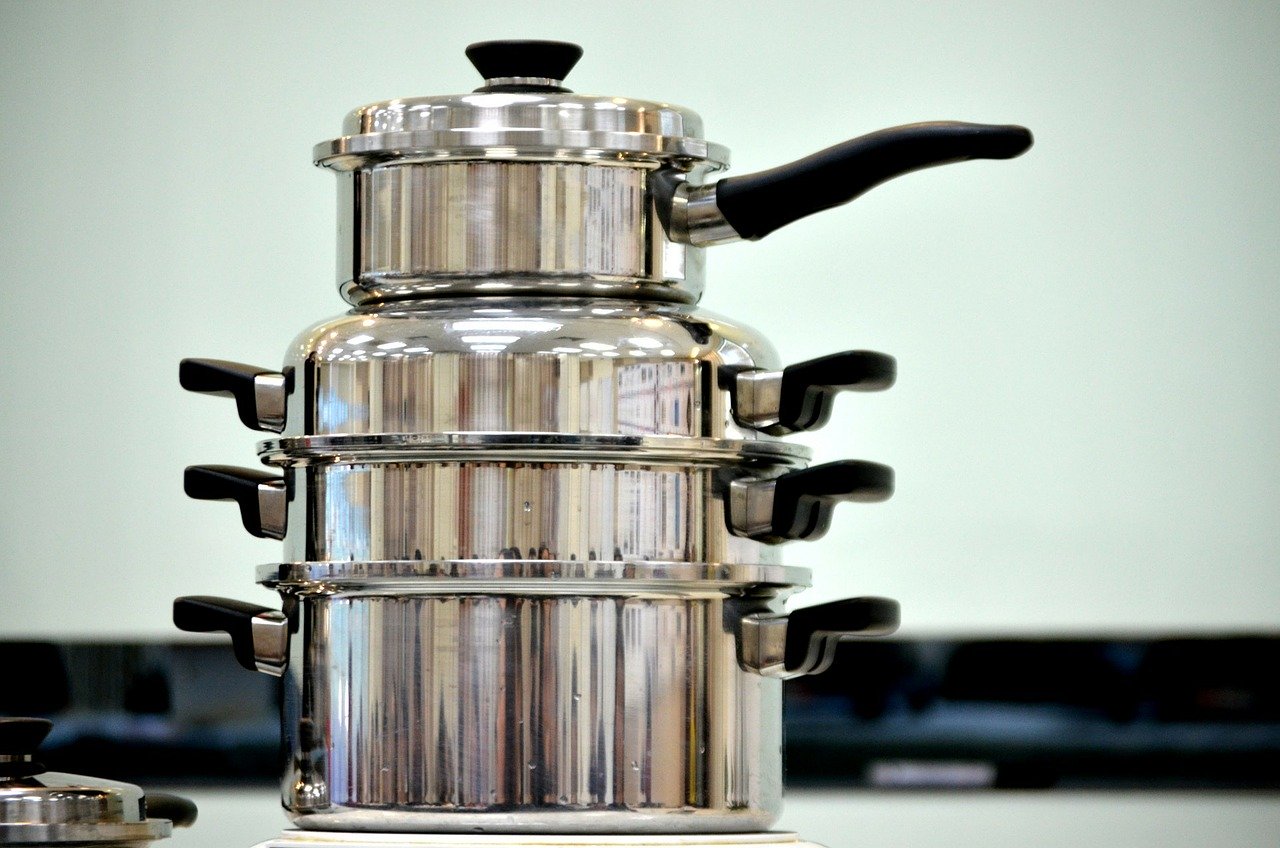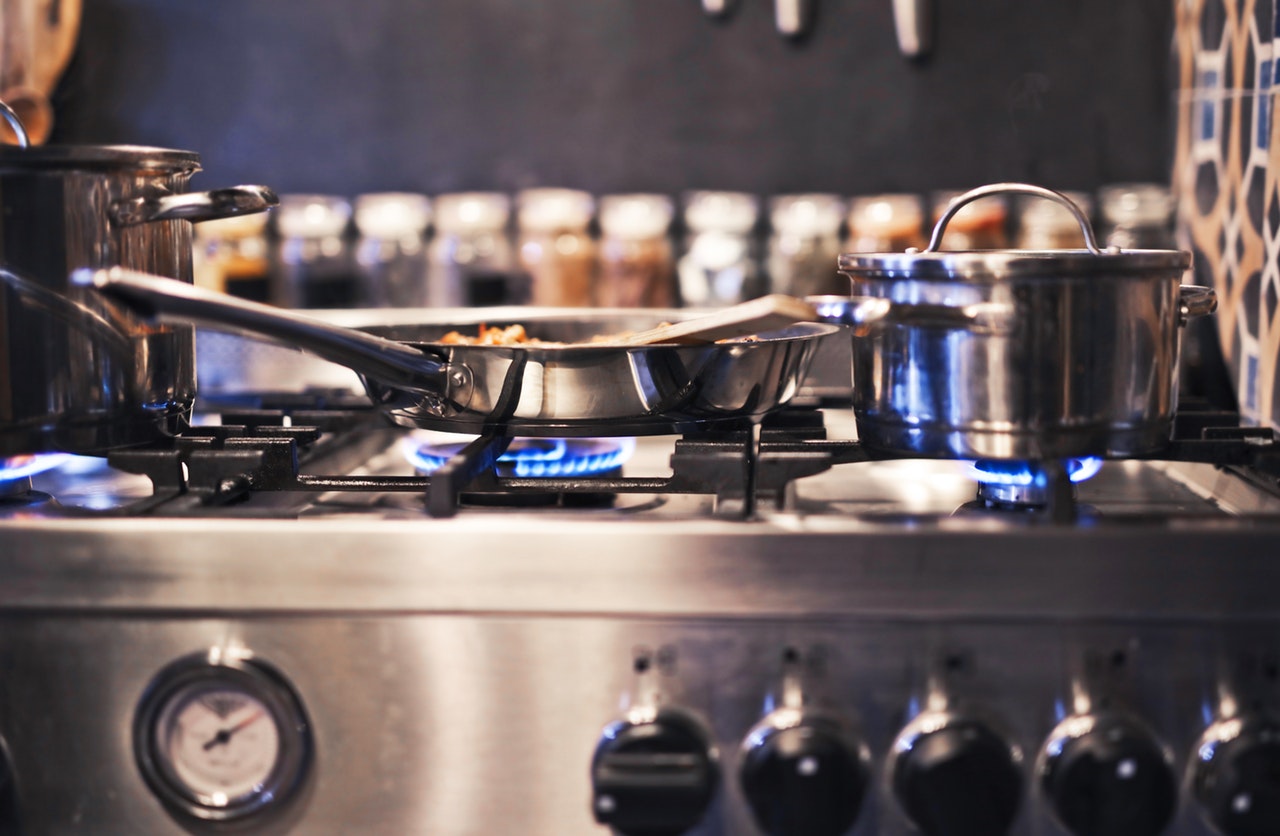There was a time when it would be so tricky to get the right set of utensils for my kitchen adventures. But it’s all in the past now!
What I’ve learned from having to cook with the wrong set of cookware is enormous. There’s a heap of burnt meals and badly tasting recipes to show for my improper utensil use.
So if you’re keen on how to ensure the quality of your cookware, here’s the right set of info for you!
Take a Look at the Make-up of the Cookware
When you’re in the hunt for the right set of cooking utensils, there’s a lot to look at. The first thing you should consider the material used in making your utensils.
There’s a ton of materials used in making cookware, and makers will likely swear by metals as the best. Metal cookware such as stainless steel is much better. They also leave your food warmer for longer.
Also, cookware with a make-up of copper and iron has corrosive properties. And this cookware is much harder to maintain in the long run.
With the right set of materials used in making your pan, the following features should be present;
Reactivity potential
Have you ever noticed cookware having more than one color after using it to prepare a meal? It’s a sure thing you must have! There’re cooking utensils poised to get darkened in the long run. Such occurrence is due to the acidic properties present in some foods. You have to know about is aluminum cookware safe.
Mainly, cast iron and copper utensils tend to generate such colors quickly. But it takes a while to develop on steel-based cookware.
Heat distribution
The tendency of your cookware to generate heat differs from its distribution potential. The heat from your fuel source heats the base of your cookware, creating a heat source upwards into your pan.
When you’ve got to choose among metals, here’s a quick look at the options available in stores right now;

Stainless Steel Cookware
Cooking utensils made with stainless steel have several variations. Recent advancements have increased its potential to conduct heat. And it’s the choice for many standard home kitchens as a result.
The top stainless steel cookware is very safe, durable, and easy to clean. This type of cookware ensures the heat distribution evenly and premium quality non-stick surface. Some of are you will find are dishwasher safe too and last for a lifetime.
Sometimes, stainless steel comes combined with other metals such as copper and aluminum for a stronger core. The more substantial base assures more heat distribution through the pan.
Cast Iron
With a cast iron cookware, expect any well-rounded heating process to go on for much longer. But these cooking utensils remain heated for a long time when they get to temperature.
It’s a common practice for sauté pans and other slow-cooking utensils to come made out of cast iron.
Copper
Copper pans come with a design ensuring easier thermo-conductivity, meaning you’ll get your meals ready in a jiff.
But to have a thick enough layer for cooking, copper cookware comes forged using several layers of sheets to get the right thickness.
Aluminum
When you need a lightweight, quick-heating pan, there’s little competition with the aluminum pan.
Based on its flexibility and many variants, this cookware comes resistant to corrosion common in weightier pots/pans. Also, it’s possible to combine aluminum with other metals to boost its usefulness.
Carbon steel
These cooking utensils come made to support different temperatures simultaneously on a pan. The multi-heat feature is as a result of the massive build of carbon steel. It’s ideal for sautéing and searing dry meals as it takes some time to heat up fully.
Easy maintenance
Pots with a low maintenance potential are a massive turn-off, as we want our chores done in record time, all the time.
Your chosen cookware should scrub easily and be readily usable in a few moments. Hard-to-wash cookware holds on to oils and other substances, making them challenging to clean. So avoid such wares by all means.
The Handles are Vital
Who wants to get burned by boiling oil? No one! To ensure you don’t come second best when cooking with your pan/pot, take some time out to check if the handles are legit.
With the right set of handles appropriately fitted on your cookware, it’ll be easier to cook meals without any fear.
Your Heat Source is a Determining Factor
Just as it’s no easy feat to get the right cookware, the heat source you intend using also plays a role in ensuring the best pick.
There’re lots of options when it comes to cooking heat. You could get an induction heater, gas, electric, coal, and much more.
Stainless steel cookware performs much better across all heat sources. It’s one reason why stainless steel comes regarded as an industry favorite.
Other heavier pans such as cast iron and clay aren’t the best when you need food ready in a jiff.
Take a Good Look at the Lids
If you’re in the market for cookware with a need for lids, then it’s an excellent option to check this out. With the wrong set of covers, your food may boil over regularly. Such boil-overs could cause epic fails in your kitchen now and then.
And it doesn’t just stop with fittings; your lids have got to be heatproof too! When the tops aren’t heatproof, the chances of a kitchen mishap significantly increase. So, to keep yourself safe, go for the cookware with fitting, heatproof handles.
High Non-Stick Potential is a Must
It’s no doubt you’ve had a lovely meal destroyed because of your sticky cookware. When this is an issue, your best bet is to get a cooking utensil with a low tendency to glue food to its base.
There’re many non-stick options to choose from. Some traditional cookware materials now come with coatings to provide a non-stick base.
The best option for coating a non-stick pan is PTFE (poly-tetra-fluoro-ethylene). It’s widely accepted based on its cohesiveness to a wide range of metals.
Summary
With all the tips you now have, your choice for a set of cookware will become more natural than ever. Make use of this info to your advantage, and be your best at all times when in the kitchen.

